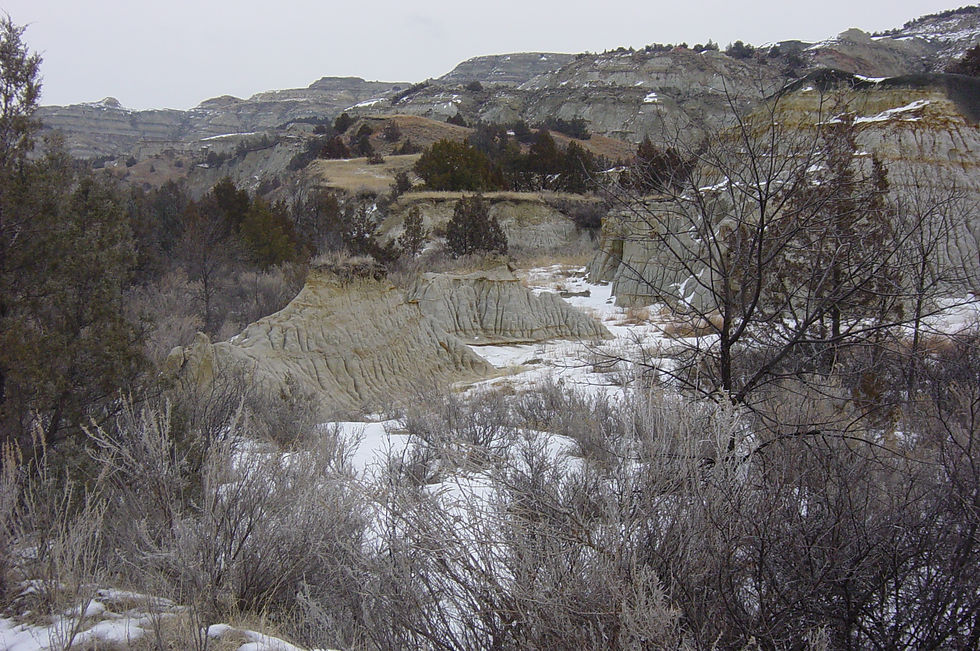
Theodore Roosevelt National Park
 |  |
|---|---|
 |  |
 |  |
 |  |
 |
My friend and I were looking for some challenging Winter camping and elected to visit Theodore Roosevelt National Park in March. It’s still pretty cold in this region at this time, as we would later understand.
We visited the Northern Unit of the national park and followed the Achenbach trail south and west from the Little Missouri Nature Trail Trailhead. Almost immediately, we passed over the Little Missouri River, which was frozen. The eroded sandstone throughout the park was spectacular and observing wild bison roaming heightened the experience even more. Although we were dressed appropriately, the weather didn’t discomfort us. After a nice, pleasant day of hiking, we stopped for the night between Achenback Spring and the re-crossing of the Little Missouri River. Our tent site afforded us an outstanding view of the river valley, with orange and brown from foliage being highlighted by the setting sun. Although the tent stakes resisted going into the cold soil, we eventually managed to get the tent settled well.
The next morning, we had eggs, bacon, and hash browns. It was somewhat foolish, because I brought a camp stove and meal plan for much warmer weather. This decision would become a problem in the evening. After breakfast, we broke down camp but were unable to dislodge the tent stakes. The Winter freeze held those aluminum stakes in the ground and wouldn't release them, so we left them. While hiking, we crossed over the Little Missouri River and followed the low plain for another hour. When we reached the ascent near Sperati Point, we stopped to assess our options. Ascending the plateau to Sperati Point and the Oxbow Overlook is at least 1000 feet, and then you come back down less than a mile from where we were standing. That route would require at least two hours. Given the frozen conditions, we elected to proceed northeast along the bank of the Little Missouri, anticipating crossing its frozen surface two times to return to the trail. The first crossing was pretty narrow. At the second crossing, we waited while the other crossed. However, it was a success. We resumed the hike eastward. We ascended the plateau near the Riverbend Overlook Trailhead. While climbing the plateau, I reached into the quills of a cactus plant. Those quills would still be in my hand a week after leaving the park. Once our campsite was setup, we went about melting water to drink. All the creeks were frozen, and snow was our only water source. Using the isobutane stove over the next two hours, we melted enough snow for our drinking needs. Shortly afterward it became dark, and we started dinner. Although we were able to have soup, our stove fuel ran out or condensed in the cold weather, denying our attempts at making pizza. At least our drinking needs were taken care of.
On the morning of third day, it was a bright sunny day. We started out from the tent promptly. Since we didn’t have a functioning stove, we left without eating oatmeal. Very quickly we reached the Juniper Campground and the trailhead. On our way back to Chicago, we stopped at a roadside dinner that had the most amazing blueberry pancakes. We still talk about it to this day.